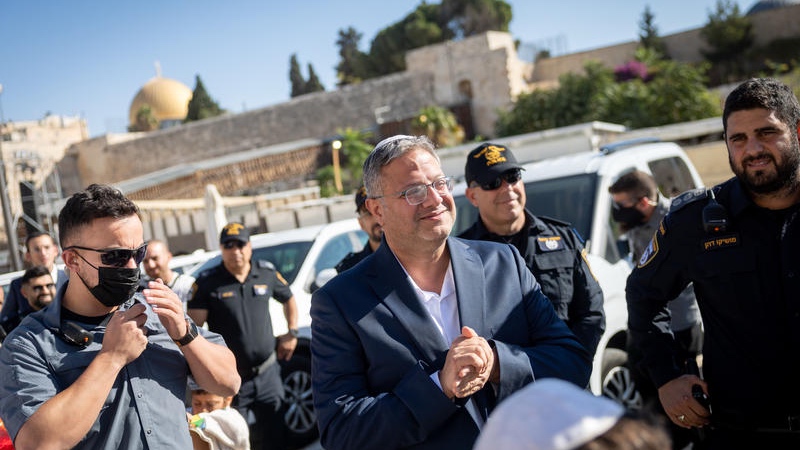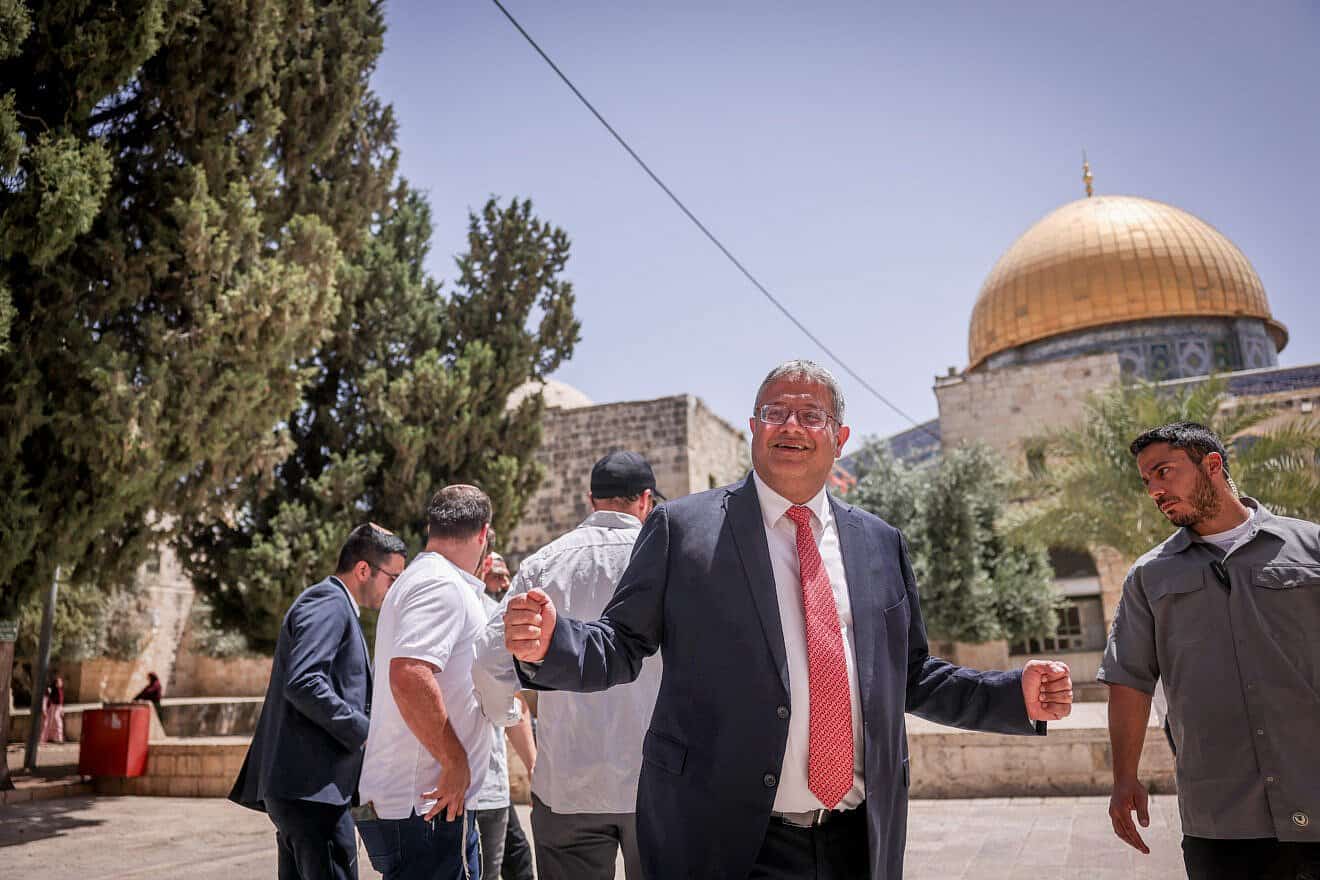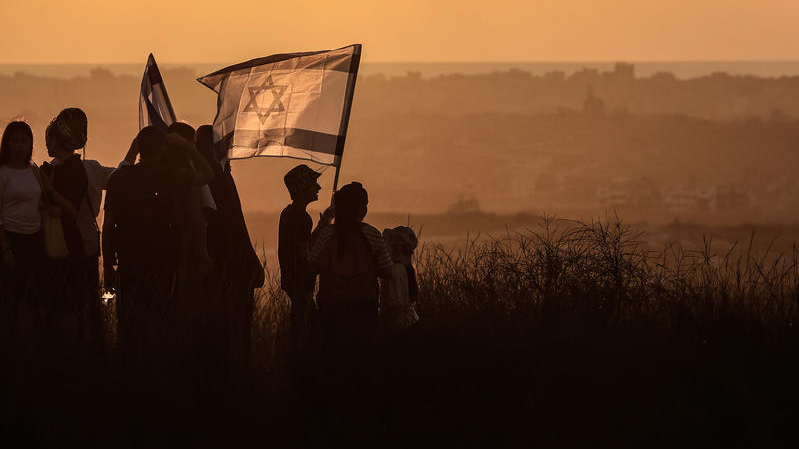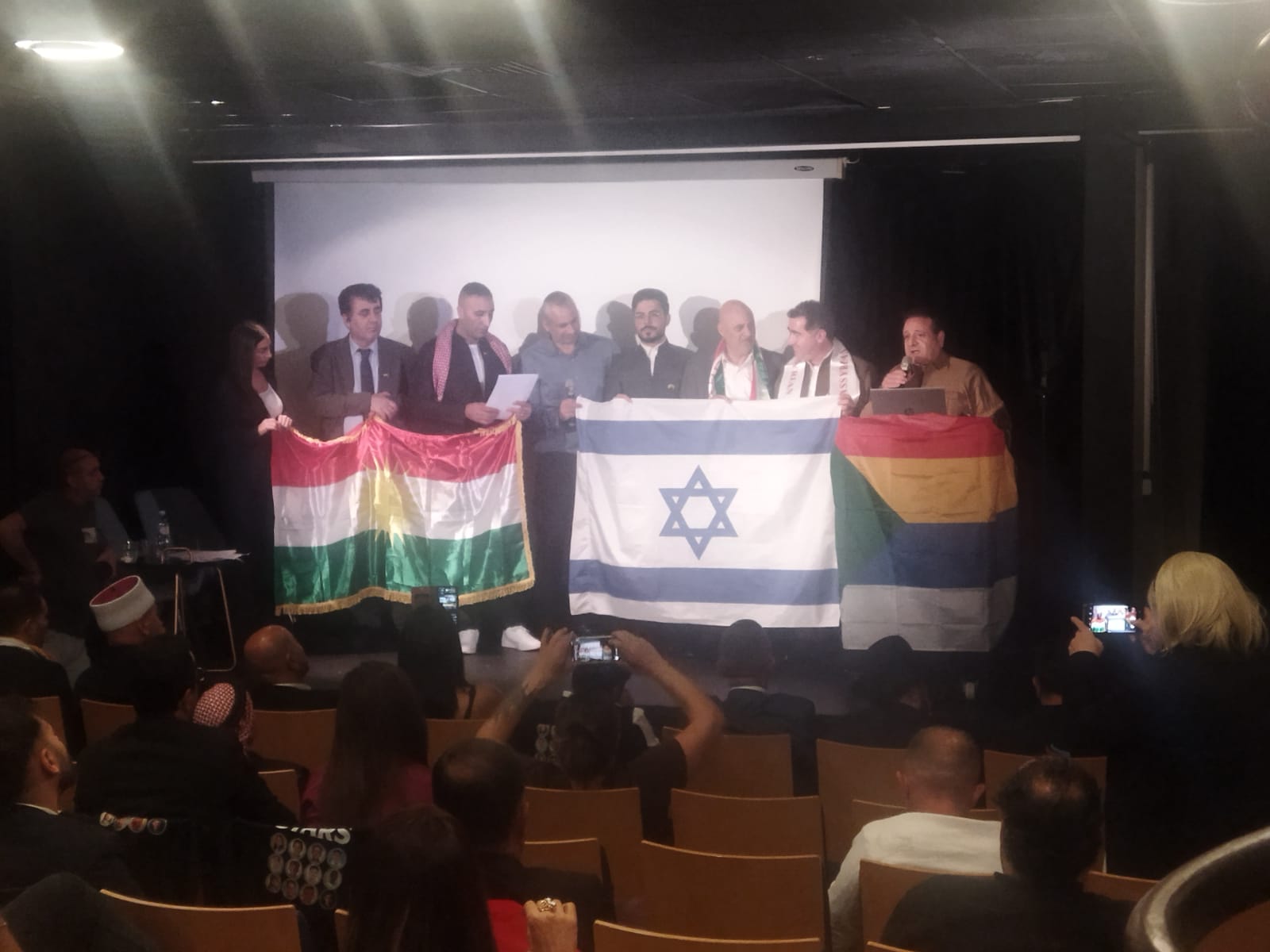Standing atop Jerusalem’s Temple Mount—Judaism’s holiest site—Israeli National Security Minister Itamar Ben-Gvir declared on Wednesday that Israel is “victorious” two years after Hamas’s brutal Oct. 7, 2023, invasion of southern Israel.
“We are two years after the terrible massacre,” Ben-Gvir said. “Here at the Temple Mount there is victory. In every house in Gaza, there is a picture of the Temple Mount—and today, two years later, we are victorious here at the Temple Mount.”
The minister, who leads the Otzma Yehudit (Jewish Power) party, said Israel’s mission remains unfinished until victory is complete in Gaza. “We are the masters of the Temple Mount,” he said. “I only pray that our prime minister will allow a complete victory in Gaza as well—to destroy Hamas, to bring back the hostages, and with God’s help, to achieve total victory.”
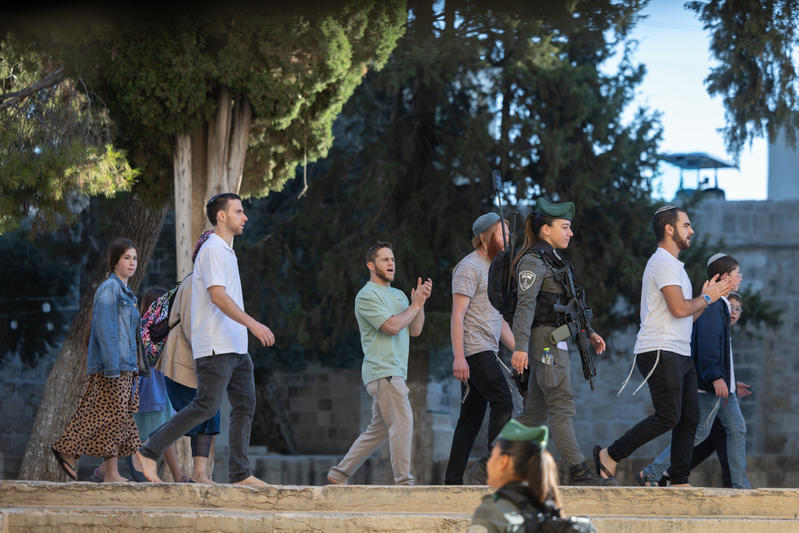
Orthodox Jews accompanied by Israeli Border Police on the Temple Mount, during Sukkot, in Jerusalem’s Old City, on October 8, 2025. Photo by Chaim Goldberg/Flash90
Ben-Gvir’s remarks came amid record-breaking numbers of Jewish visitors ascending the sacred site this year—68,429 Jews during the Hebrew year 5785, according to the advocacy group Beyadenu—Returning to the Temple Mount, a 22% increase over the previous year and the highest in modern history.
During the recent Rosh Hashanah holiday, from Sept. 22–24, 897 Jews ascended the Mount compared to 485 last year, a clear sign of growing national and spiritual resolve.
“The Jewish public seeks to celebrate Rosh Hashanah on the Temple Mount, the holiest site for the Jewish people, with prayers and joy,” said Akiva Ariel, the group’s spokesman.
Ariel condemned the arrest of five Jews for blowing the shofar—a ram’s horn blown on Rosh Hashanah as a biblical commandment—calling it a “severe violation of Jewish freedom of worship.”
“We will continue to act until this discrimination is abolished and equal rights are guaranteed for all worshippers on the Mount,” he said.
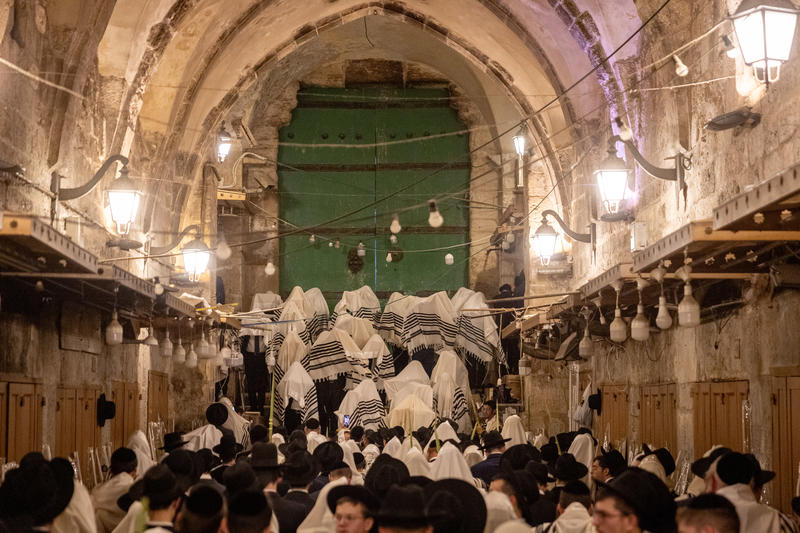
Jewish men cover with prayer shawls while hold the four species – palm, citrus, myrtle and willow – as they take part in a shaharit prayer during the Jewish holiday of Sukkot at the entrance to the Temple Mount in Jerusalem’s Old City on October 8, 2025. Photo by Chaim Goldberg/Flash90
Under Ben-Gvir’s tenure as national security minister, the Temple Mount has seen a historic surge in Jewish visits and prayer activity, including on Tisha B’Av, the national day of mourning marking the destruction of the First and Second Temples. Over 4,000 Jews ascended the Mount this year on that day—among them Ben-Gvir himself and Minister Yitzhak Wasserlauf, who oversees the development of the Negev and Galilee.
Even as the Prime Minister’s Office maintains the long-standing “status quo” restricting open Jewish prayer at the site, the movement to restore Jewish presence and sovereignty has gathered unprecedented momentum.
Predictably, the Palestinian Authority condemned these displays of Jewish faith. In August, its Jerusalem Governorate labeled the shofar a “dangerous tool” used by Israel “to impose sovereignty.”
But for many Israelis, that accusation only underscores the absurdity of the conflict—that the very sound calling Jews to repentance and renewal is treated as a threat.
Two years after Hamas’s massacre of 1,200 Israelis, the Jewish nation stands unbroken, its flag still flying over the land, and its people returning—once again—to the Mount where Jewish history began.
From the ruins of tragedy, a message of endurance rings out: Israel lives, prays, and rises in Jerusalem.
Want more news from Israel?
Click Here to sign up for our FREE daily email updates


